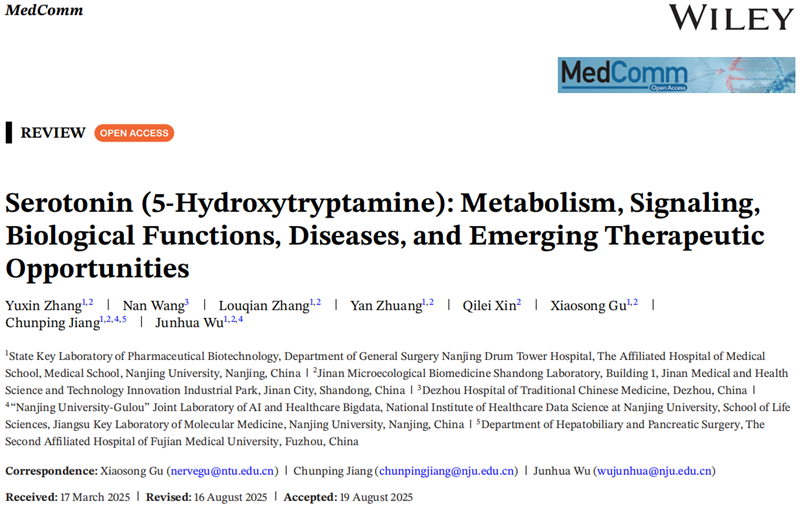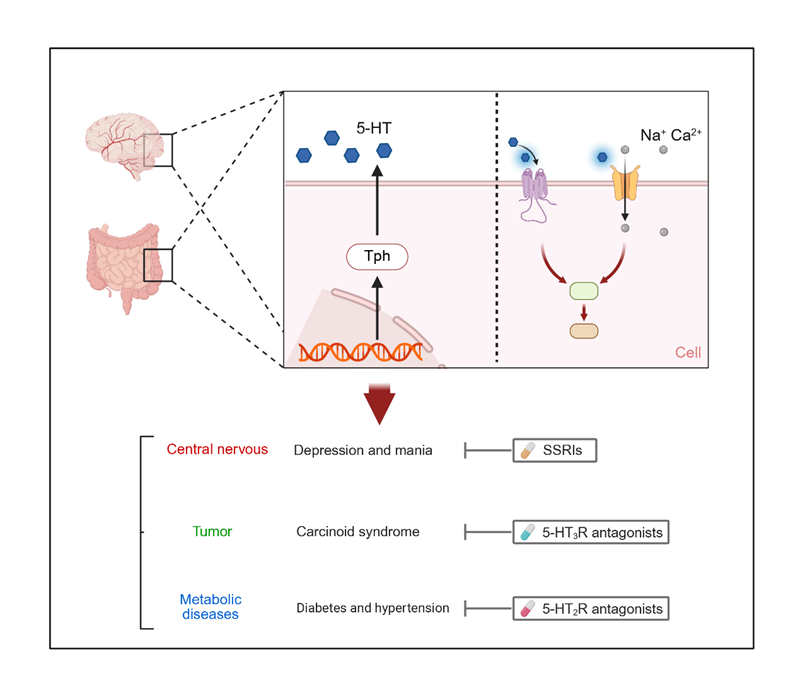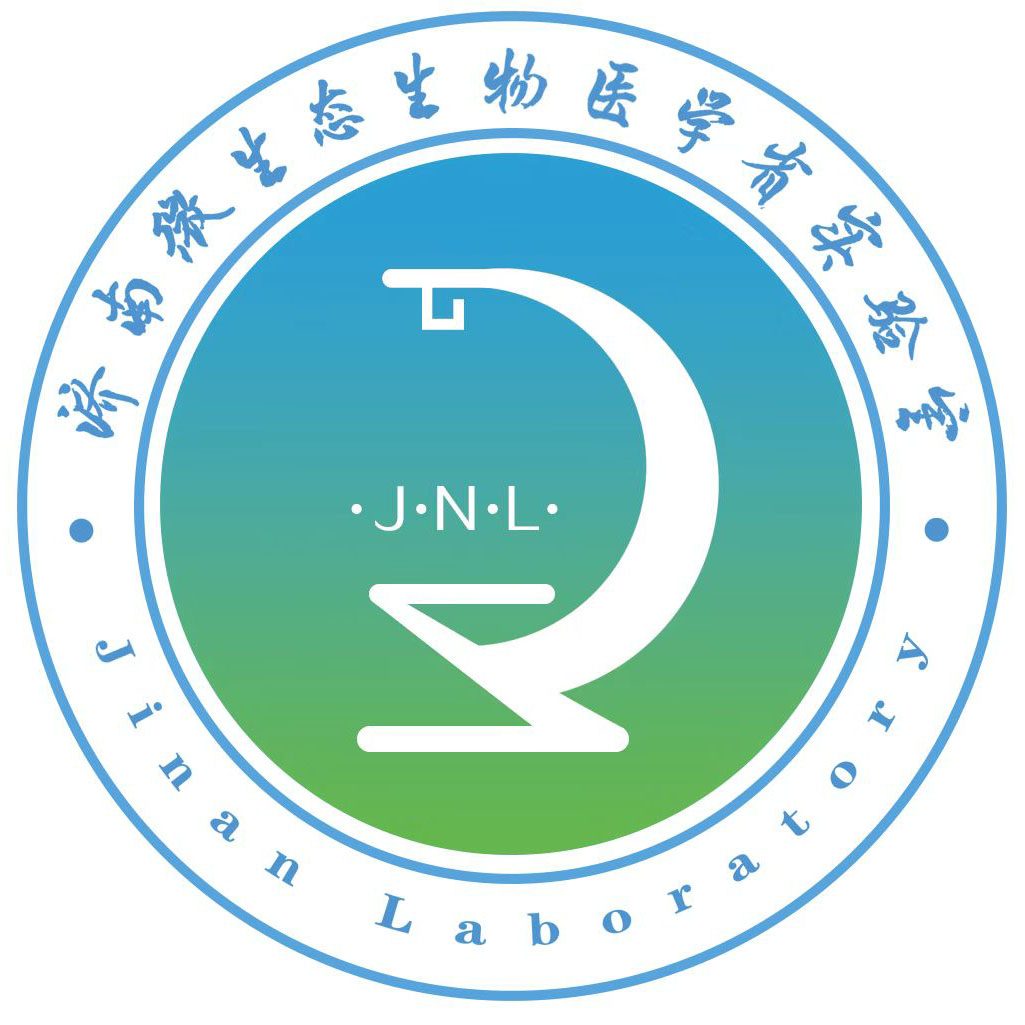Recently, the team led by Academician Gu Xiaosong, Professor Jiang Chunping (Deputy Director of the Laboratory), and Professor Wu Junhua from the Jinan Laboratory systematically reviewed the metabolic processes, signalling mechanisms, and physiological/pathological functions of 5-HT, focusing on its role and therapeutic potential across various diseases. This review, titled “Serotonin (5-Hydroxytryptamine): Metabolism, Signalling, Biological Functions, Diseases, and Emerging Therapeutic Opportunities”, was published in MedComm (Impact Factor: 10.7, Q1 in CAS).

Serotonin (5-hydroxytryptamine, 5-HT) serves as a pivotal neurotransmitter, hormone, and immunomodulatory molecule, extensively regulating diverse physiological processes within the central nervous system and peripheral tissues. Beyond regulating mood, cognition, and pain perception, 5-HT influences gastrointestinal motility, cardiovascular function, platelet aggregation, and immune responses. Beyond its fundamental biological roles, dysregulation of the 5-HT system is closely associated with numerous diseases, including depression, irritable bowel syndrome (IBS), neurodegenerative disorders, and metabolic syndrome, whilst playing a significant role in regulating the tumour immune microenvironment.
The biological effects of 5-HT are mediated through its complex metabolic pathways and diverse receptor networks. Fourteen distinct 5-HT receptor (5-HTR) subtypes are currently recognised, each mediating distinct physiological and pathological effects. Although 5-HT metabolism and 5-HTR signalling have been well characterised, their functional roles and mechanisms within disease contexts remain contentious. For instance, while the serotonin transporter (SERT) remains a classic target for antidepressants, the underlying mechanisms of 5-HT in mood disorders and systemic diseases remain incompletely elucidated. Recent studies further indicate that 5-HT plays a dual role in tumour initiation and progression, expanding its pathophysiological significance.
This review systematically summarises the metabolic processes, signal transduction mechanisms, and physiological/pathological functions of 5-HT, with a particular focus on its action mechanisms and therapeutic potential across various diseases.

Within the cytoplasm, 5-HT is synthesised from L-tryptophan (Trp) via a two-step catalytic process involving tryptophan hydroxylase (Tph) and aromatic L-amino acid decarboxylase (AADC). Following transport across the cell membrane via exocytosis, 5-HT binds to 5-HT receptors (5-HTR) to initiate signal transduction. Activation of 5-HT receptors engages interconnected signalling networks—including PKB/cAMP, PI3K/Akt, Ras/MEK1/2/MAPK, and PLC/PKCE pathways—thereby regulating disease progression across psychiatric disorders, gastrointestinal diseases, hepatopathies, diabetes mellitus, and oncology.
Research Implications
By integrating insights from biology, immunoregulation, and molecular signalling, this paper highlights serotonin's comprehensive role in multisystemic diseases, offering a holistic perspective and strategies for future mechanistic research and clinical applications.
This research was supported by the Shandong Provincial Key R&D Programme (No. 202502), Shandong Provincial Laboratory Project (No. SYS202202), National Natural Science Foundation of China (Nos. 82272819, 81972888), and Jinan Microecological Biomedicine Shandong Laboratory Science Research Projects (Nos. JNL-2025008B, JNL-2025009B, JNL-2025011B, JNL-2025010B, JNL-2025012B, and JNL-2023017D), and the Jiangsu Provincial Key R&D Programme (No. BE2022840).





